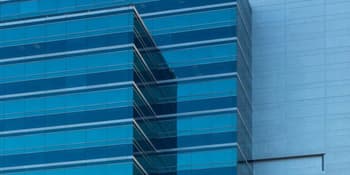In Short
- The landlord is responsible for installing fire safety equipment and complying with fire safety regulations.
- Tenants usually must maintain fire safety equipment and comply with the building’s fire safety policies.
- Ensure the lease clearly defines fire safety responsibilities to avoid disputes and ensure compliance.
Tips for Businesses
Before signing a lease, check that fire safety equipment is installed and regularly serviced. Review all fire exits, safety certificates, and compliance with regulations. If necessary, consult a fire safety expert or review strata records to confirm the landlord’s obligations. Clear terms in the lease help avoid future disputes.
A fire in a commercial premise can be devastating, particularly if you do not have insurance or have not kept fire safety equipment up to date. But, if you are a tenant, who is responsible for fire safety under your lease: you or the landlord? There are many issues regarding fire safety and compliance in commercial premises. This article will explain whether it is the landlord’s or your responsibility to maintain fire safety standards on a property.
Who is Responsible for Installing and Maintaining Fire Equipment?
Your lease should specify who is responsible for installing fire safety equipment and any maintenance obligations. While a good lease should explain your and the landlord’s responsibilities, other legal principles underpin a lease.
Legally, the landlord has an obligation to:
- ensure that you can safely use the property for the use specified in the lease;
- get insurance for both the building and for public liability;
- comply with all strata directions and pay strata rates (if the property is in a strata scheme);
- install fire safety equipment for the building; and
- comply with all local government regulations regarding fire safety on the property, such as constructing adequate fire escapes and properly signing fire exits.
Subject to the contents of the lease, you usually have a duty as the tenant to maintain fire equipment and comply with any maintenance obligations. Furthermore, you must comply with fire safety regulations for the business. This will require you to adhere to the building’s fire safety policy, which may include:
- the appointment of fire wardens;
- participating in training drills; and
- regularly servicing equipment such as extinguishers, smoke alarm batteries and sprinkler systems.
What Should I Check Before Entering Into a Lease?
Before agreeing to lease premises, ensure fire safety is in order. You need to pay careful attention to whether:
- there is fire equipment installed on the premises, noting that this should include fire extinguishers, fire sprinklers, fire blankets and fire alarms;
- this equipment is located in an accessible place;
- all fire exits are clear with properly lit exit signs;
- fire exits are accessible for people with disabilities;
- ceilings and walls are made with suitable materials or are fireproof; and
- there are fire certificates for the premises that certify that the landlord has regularly and properly serviced the fire equipment.
If in doubt, engage a fire safety expert for a building report. For strata premises, you should seek access to the owner’s corporation records surrounding fire safety. You want to ensure that the landlord is compliant before you commit to leasing the property.
Continue reading this article below the formCan a Landlord Shift the Fire Safety Obligations to Me?
It is common for a commercial lease to require the landlord to ensure the premises are fire-compliant and have the appropriate safety equipment. However, as the tenant, you may have an obligation to maintain and service that equipment during the lease term.
However, the type of maintenance you are required to do only needs to be the one that upkeeps the premises. It is the landlord’s responsibility to take care of any structural work. When determining whether the work that the landlord is asking you to do is upkeep or structural, courts will consider whether it is ‘structural in nature’. When work is ‘structural in nature’, it converts the condition of the building from unsafe to safe. If so, then the work is the responsibility of the landlord.
Negotiating Fire Safety Responsibilities in Your Lease
When entering into a lease agreement, it is crucial to negotiate clear terms regarding fire safety responsibilities. Ensure that the lease explicitly states who is responsible for installing, maintaining, and inspecting fire safety equipment. Additionally, consider including clauses that require the landlord to provide evidence of compliance with fire safety regulations, such as copies of the Annual Fire Safety Statement and records of recent inspections and maintenance. By clearly defining these terms in your lease, you can avoid potential disputes and ensure that both parties understand their obligations, creating a safer environment for your business operations.

Need to exit your commercial lease early? Download this free guide to understand your options and avoid costly mistakes.
Annual Fire Safety Statements in NSW
Under NSW Regulation, all commercial buildings must have a valid Annual Fire Safety Statement (AFSS). The AFSS confirms that an Accredited Practitioner (Fire Safety) has inspected the structure and that it meets the required safety standards. The landlord is responsible for forwarding the AFSS to the council by the due date each year. Additionally, they must provide a copy to the fire brigade and display it in the building’s entry.
Understanding Legal Obligations in Fire Safety Compliance
In addition to the specific responsibilities outlined in your lease, tenants should be aware of the broader legal framework governing fire safety compliance. The Work Health and Safety Act 2011 (WHS Act) places a duty on tenants to ensure the safety of their employees and anyone affected by their business operations. This means that even if your lease stipulates that the landlord is responsible for specific fire safety measures, you must still take proactive steps to ensure these measures are adequate and functional.
Key Takeaways
Fire safety is paramount and should not be overlooked when entering a lease. As a tenant, you should make sure that you:
- consider the terms of the lease to work out what your fire safety obligations are;
- know what sort of fire safety equipment is already in place;
- understand what the landlord’s obligations are; and
- understand what is considered ‘structural’ when it comes to repair work.
If you have any questions about fire safety in your commercial lease, our experienced leasing lawyers can assist. As part of our LegalVision membership, you will have unlimited access to lawyers to answer your questions and draft and review your documents for a low monthly fee. Call us today at 1300 544 755 or visit our membership page.
Frequently Asked Questions
Subject to the lease’s contents, tenants will usually have a duty to maintain fire equipment and comply with any maintenance obligations. Tenants must also comply with the business’s fire safety regulations, including the building’s fire safety policy.
The landlord is responsible for any work that is ‘structural in nature’—that is, work that transforms the building’s condition from unsafe to safe.
We appreciate your feedback – your submission has been successfully received.











